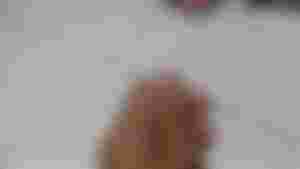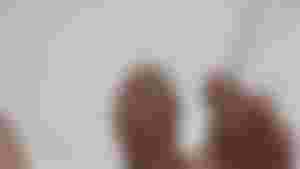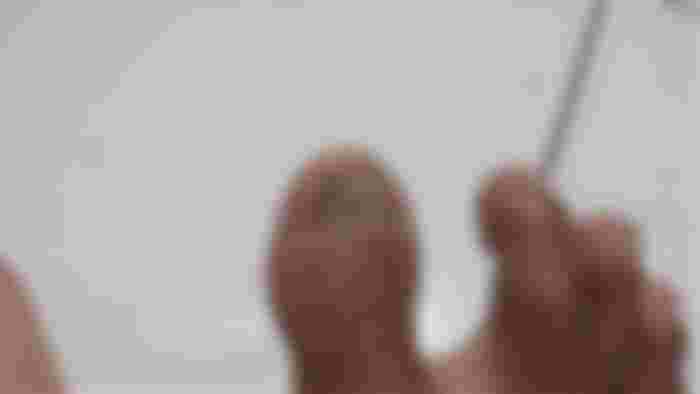Taking care of your nails will make your nails avoid nail problems
Nails are one of the organs of body that protect tips of fingers and toes. Fingernails also help you pick up objects, scratch itchy skin, or simply untie knots. Nails are made of a protein called keratin. Keratin is a protein that also makes up skin and hair.
These sensitive finger and toe guards grow from cells that proliferate in the base of nail. Then, cells coat each other and harden. This process is referred to as keratinization. Before recognizing what diseases and problems are often experienced by nails, first identify how structure of these finger and toe protectors is.

Everyone has a different nail strength, thickness, and growth rate. Generally, these three factors are inherited from parents, aka genetic factors. Nail disease can occur in anyone, regardless of age and gender. Some nail abnormalities require treatment from a dermatologist. Meanwhile, there are not a few that can be overcome with simple home remedies.
Here are some types of nail diseases that you need to be aware of.
Nail fungal infection
One of the most common nail diseases is a fungal infection of nails. This condition, called onychomycosis, tends to occur in toenails and is prone to be experienced by people with diabetes or often wearing damp shoes.
Nails are black
In addition to fungal infections of nails, discoloration of the nails to black can also be a sign that you have a problem with your nails. This condition, known as a subungual hematoma, occurs when there is blood in the skin underneath.
Blood on skin below is usually caused by trauma caused by injury. Meanwhile, a black color that appears directly on surface of nail and followed by painful nail growth, could be a sign of melanoma.
This nail disease usually only affects one nail. In addition, melanoma can also cause nail lines to darken and widen. In fact, these changes can also spread to the skin around the fingernail.
Cantengan
Name does sound strange, an ingrown toenail is a disorder when your fingernails grow inwards and pierce flesh. As a result, your fingers and toes will feel sore and swollen when pressed by an object.
Ingrown toenails are usually caused by various habits, including frequent wearing of narrow shoes. In addition, fungal infections can also be the cause of ingrown toenails.
Nails dry and break easily
Nails that fall off and break easily are effect of dry nail plates from swimming or being in a dry home environment. In fact, this nail disease is also one of effects of using nail polish and acetone.
This condition is usually caused by a lack of intake of vitamins A, B, and C which allows the sensitive finger guard to break easily. Another cause is exposure to chemicals in cleaning products or as part of the aging process.
Wavy nails
Normally, nail will grow straight forward with tip slightly downwards. However, some people turn out to experience unusual nail growth, namely wavy nails.
Wavy nails are divided into two types, namely vertical and horizontal. Nails that grow vertically and curl upwards are usually caused by variations in nail cell changes and are harmless.
Even so, nails that change color and have waves with a horizontal direction usually indicate certain diseases. This condition is usually caused by skin diseases such as eczema.
Not only that, owners of dry skin are also more prone to bumpy skin. In fact, people who lack protein, calcium, or vitamins can also experience the same problem.
Nail color change
Some of you may not realize that nails that were originally clear have changed color. Most cases show that the color of the nails turns yellow due to several things, namely: fungal infection, consumption of certain drugs, and nail psoriasis.
Discolored nails can also be a sign of certain diseases, such as lung damage and liver disease. Not only yellow, nails can also turn green-black due to the consumption of drugs. Meanwhile, blue nails can also be a sign of Wilson's disease. That's why, you need to check health of your nails often to see if there is a discoloration or not.
After knowing what types of nail disease are, now is the time to recognize characteristics of damaged nails, as described below.
White line on nails
Leukonychia is name for appearance of white lines on the nails. This condition is not dangerous even though term sounds serious. White streaks on the nail can be caused by mild or moderate trauma to growing nail.
Even so, white lines on nails can indicate a minor infection or a side effect of certain medications. In fact, the white lines that appear so much that almost all fingernails, you should be wary.
White vertical lines on nail surface can also be a sign of stress. The reason is, when hit by stress the body will react naturally to protect itself from threats, such as reducing the water content under the nails.
It aims to store sufficient water reserves. As a result, the nails become very dry and easy to peel. This condition also makes the surface of the nail rough and white vertical stripes appear.

Thick nails
With age, growth and repair rate of nail cells will become slower. This causes accumulation of oncocytes in nail plate which makes nail appear thickened.
However, thickening of nails due to aging is more common in toenails. The reason is, fingernails can grow three times faster than toenails, so risk of thickening is smaller than toenails. Any problems that occur in the nails should be asked to a doctor, especially a dermatologist.
If cause of your nail deformity isn't very obvious, your doctor may take nail clippings and splinter from under your nail for diagnosis. Generally, toenail infections respond to treatment more quickly than toenail infections.
Once diagnosed, doctor will treat your nail disease based on cause. In addition to getting treatment from a doctor, following nail disease treatment can be supported by nail care at home.
Maintain good hygiene.
Wear gloves when washing dishes.
Avoid harsh chemicals, such as soaps and detergents.
Limiting exposure to chemicals, such as hair dye.
Reduce use of nail polish.
Don't clean under nails too often.
Resist urge to bite your nails.
Trim nails with nail clippers to keep them clean.
Make sure shoes are right size for breathability.
If you have problems with your nails, you should consult a specialist to get the right medical treatment. Hopefully it can add to your insight.


I learned to take care of my nails back in high school. Ever since then, I've become more conscious of making my nails clean and beautiful to look at.